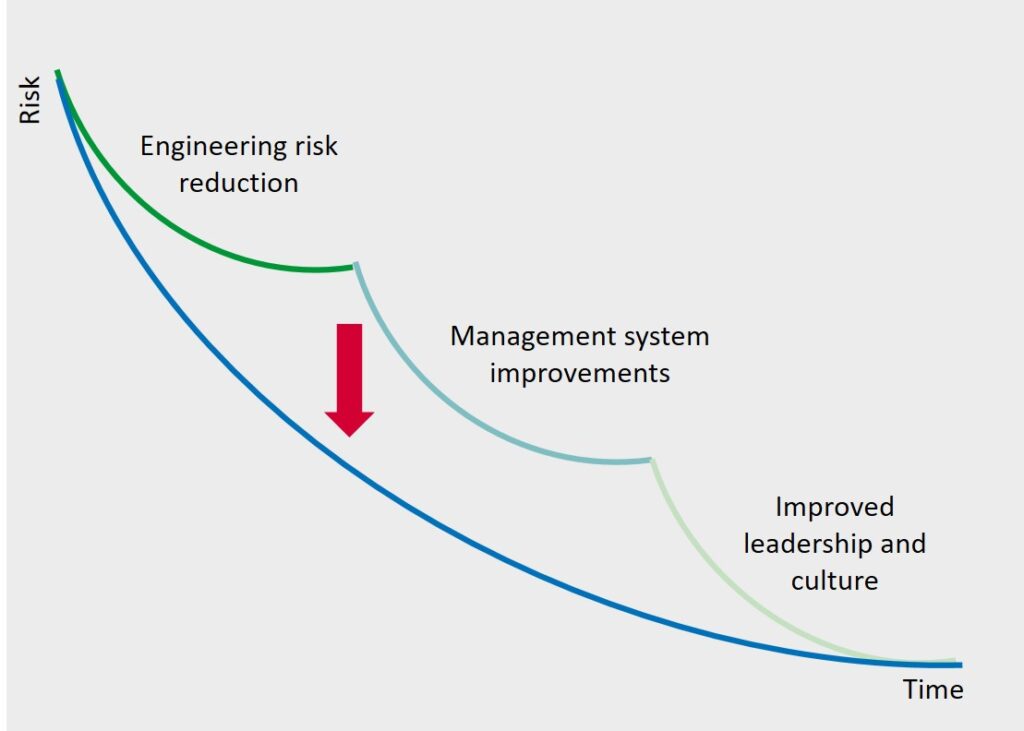Culturally-enabled HSE management systems
If you had to name a single attribute of an organisation responsible for its success or failure, it would probably be its culture. While difficult to define precisely, we know good culture when we encounter it and we acknowledge its importance.
The term safety culture was first coined after the 1986 Chernobyl nuclear accident to help explain how the collective lack of understanding of risk and safety by the employees and organisation contributed to the disaster. Today, safety culture is often defined as “the product of individual and group values, attitudes, perceptions, competencies and patterns of behaviour that determine the commitment to, and the style and proficiency of, an organisation’s health and safety management” [Ref. 1].
The concept of a Health, Safety and Environmental Management System (HSEMS) evolved in the nineties and is commonplace today. Simply put, a HSEMS is a framework of processes and procedures that ensure an organisation can fulfil its HSE objectives.

THREE WAYS TO IMPROVEMENT
Progressive HSE improvement and risk reduction are commonly represented as three stages corresponding to changes in engineering, management systems and leadership and culture (see Figure 1).
This model helpfully distinguishes the different key elements of HSE improvement but implies that improving culture is separate from, and follows, engineering and management system improvements. However, it must be emphasised that this is not the case – they are mutually dependent.
MUTUAL DEPENDENCE
A culturally-enabled HSEMS is one where the HSE management framework and HSE culture are fully aligned and mutually supportive. Effective management systems can facilitate the development of good safety culture, helping it grow to become an integral and ultimately, fully embedded, part of the organisation. The principle of mutual dependence is key – good organisational culture should drive the development and implementation of the HSEMS, and the HSEMS should be designed to promote and support a positive HSE culture.
The HSEMS provides a framework within which everyone in the organisation should be committed and motivated to work within. Although this framework will be documented and managed through procedures, manuals, databases, etc. and compliance with these may be mandated, this is not, and cannot be, sufficient. Inevitably, documented procedures will never be 100% correct and unambiguous, and demanding compliance will always be an inadequate means by itself of assuring all HSE issues are addressed effectively.
The importance of participation, ownership and personal commitment to HSE as a value throughout the organisation – a positive HSE culture – cannot be overstated. By achieving this, the highest standards of HSE management become common sense and commonplace. Correspondingly, the evaluation of the HSEMS design and implementation (through audit, performance measurement and management review) must focus on the overall effectiveness of HSE management, not solely on compliance with procedures.
A key benefit of a culturally-enabled HSEMS is also illustrated in Figure 1 – it allows for faster and, possibly greater, risk reduction. As a minimum, it ensures that engineered safeguards and procedural barriers will function as intended. At its best, it can promote proactive, often innovative, risk reduction, leading to further improvement.
The essential requirements of a culturally enabled HSEMS are the “five Cs” [Ref. 1]:
- Control, achieved by securing the commitment of employees to clear HSE objectives.
- Co-operation between individuals, HSE representatives and groups.
- Communication throughout the organisation.
- Competence of individuals.
- Consistency in all activities.
There is extensive literature describing the characteristics, nature and importance of a good safety culture [see Ref. 2 for example].
Even an excellent HSEMS which is thorough, clear, well-structured and well documented, can flounder with a ‘pathological’ culture that does not care as long as it is not caught. Conversely, a ‘generative’ or high reliability culture will enable even an incomplete HSEMS to function reasonably effectively, and as importantly, this culture will tend to drive the necessary improvements.
CONCLUSION
While there are many factors that can contribute to HSE risk reduction, a culturally enabled HSE management system offers the most assured, resilient and expedient way to achieving and surpassing HSE objectives.
References
1. HSG 65, Successful Health and Safety Management, UK HSE, 1997.
2. Safety Culture – Assessing and Changing the Behaviour of Organisations, J.B. Taylor, 2010.
This article first appeared in RISKworld Issue 23







